The Ultimate Guide to Skin Lightening Creams: Ingredients and Benefits
Table of Contents
Introduction
In the world of skincare, skin-lightening products hold a significant position by addressing a common and unique list of skin concerns. Whether you are dealing with UV-induced hyperpigmentation or aging-associated dark spots (age spots), or simply seeking a brighter and even skin complexion, these products will be your trusty companions.
In this comprehensive guide, we will explore the concept of skin lightening, shedding light on the science of pigmentation disorders, the key active ingredients, and the intricacies of skin lightening creams for the face, body, and even touch upon the topic of permanent skin lightening.
Understanding Skin Lightening
Skin lightening, also known as skin whitening or skin bleaching, is the practice of using products to reduce skin pigmentation by altering the synthesis and distribution of the substance called melanin.
The Science of Skin Pigmentation
Melanin is a pigment molecule, produced by the cells called melanocytes that are mainly present in the bottom layer of the epidermis of the skin that gives the color of your skin, hair, and eyes. Melanin is produced through the process called melanogenesis and, not only does it give the color of your skin, but it also protects the skin from harmful sun exposure by absorbing and dissipating UV rays.
Normal pigmentation occurs when melanin is produced and distributed evenly in the skin giving you an even skin tone in a specific region whereas hyperpigmentation results in overproduction or uneven distribution of melanin, leading to a number of pigmentation conditions.
Common Hyperpigmentation Disorders
Skin pigmentation, which is associated with the natural melanin synthesis and distribution in the skin is a complex physiological process that is regulated by a range of factors. Disturbance and disruption of these contributing factors could lead to hyperpigmentation which can manifest in several forms, such as melasma, Post Inflammatory Hyperpigmentation, freckles, and dark spots.
Melasma
Melasma is a common hyperpigmentation disorder with higher prevalence seen in darker skin types and females. It is driven by multiple etiologies leading to its characteristic features of brown to gray-brown patches on the face, especially on the cheeks, chin, forehead, nose bridge, and above the upper lip.
These features are a result of several histopathological changes that occur inside your skin such as increased epidermal and/or dermal pigmentation, increased population of blood capillaries in the dermis, enlarged melanocytes, and increased actinic elastosis due to sun damage.
Even though the exact etiology is not fully understood, the following factors are thought to be contributing to the development of melasma:
- Hormonal Fluctuations: Certain hormonal changes that can be seen during pregnancy, menopause, or with the use of birth control pills are one of the most common triggers for melasma. This is also the reason why melasma is commonly known as the mask of pregnancy considering the high prevalence among pregnant women. During the third trimester, hormones like Estrogen, progesterone, and melanocyte-stimulating hormone levels are normally elevated which can result in stimulated melanogenesis and subsequent darkening of the skin.
- Ultraviolet (UV) Exposure: Prolonged UV exposure leads to increased formation of free radicals which in turn stimulate melanocytes to produce excess melanin and further exacerbate the existing patches.
- Genetic Predisposition: Family history of the condition also plays a key role in determining an individual’s susceptibility to melasma. Research studies have concluded that approximately 50% of melasma patients report a positive family history of the condition.
- Inflammatory Factors: Inflammation and skin irritation can exacerbate hyperpigmentation and, therefore it is essential to avoid any harsh treatment that can worsen melasma.
Freckles
Freckles are another common type of hyperpigmentation disorder characterized by spots or patches of melanin-concentrated cell clusters. Unlike melasma, freckles are mainly determined by your genetics and exposure to ultraviolet radiation and are not related to hormonal changes. When it comes to genetics, specific genes, such as the melanocortin-1-receptor gene which influence the production and distribution of melanin in the skin play a key role in the formation of freckles.
There are two types of freckles; ephelides which most people identify as freckles and solar lentigines.
Ephelides: Ephelides are small flat spots that are generally 1 mm to 2 mm in size or larger and, are often light brown, dark brown, or red in color. Sun exposure and sunburns are the main cause of ephelides hence, they can often be seen on body areas that can be frequently exposed to the sun such as the face, neck, arms, chest, and back. People with light-colored skin are more prone to ephelides which often become more noticeable with sun exposure and may fade in the winter months.
Solar lentigines: Solar lentigines are also skin patches that range from yellow to red to brown to dark. Unlike ephelides, lentigines are much larger in size with clear borders and tend to be more prevalent among dark-skinned people. They’re also known as actinic lentigines, liver spots, or age spots because they are typically associated with aging. Once again, frequent sun exposure is the main culprit behind triggering this hyperpigmentation condition.
Post-Inflammatory Hyperpigmentation (PIH)
Post-inflammatory hyperpigmentation (PIH), also known as acquired melanosis, is a type of hyperpigmentation that occurs following skin inflammation or injury. It is triggered by inflammatory skin conditions such as acne, eczema, or dermatitis, as well as trauma or dermatologic therapies like laser therapy or chemical peels. The mechanisms behind PIH involve:
- Inflammatory Response: Enhanced or prolonged inflammatory responses can affect the process of melanogenesis by producing excess melanin as a defensive mechanism. This excess melanin leads to localized darkening of the skin which has been affected by the inflammation.
- Skin Healing: PIH often occurs during the natural healing process of skin injuries. During the healing process where the skin repairs itself, melanocytes tend to become more active resulting in the synthesis of melanin that persist for a long duration.
-
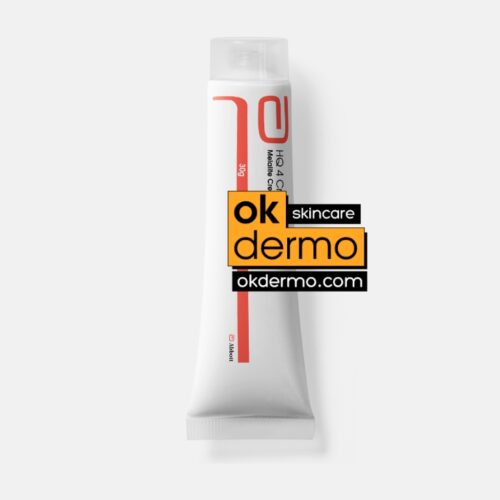
Pure Hydroquinone 4% Skin Whitening Cream
Hydroquinone 4% USP Skin Lightening Agent
Size: 20g / 0.7oz, 30g / 1.05oz
Brand name: Eldoquin, Melanox, Expigment, Eqinon, Melloderm
From USD $25.00 Select options -
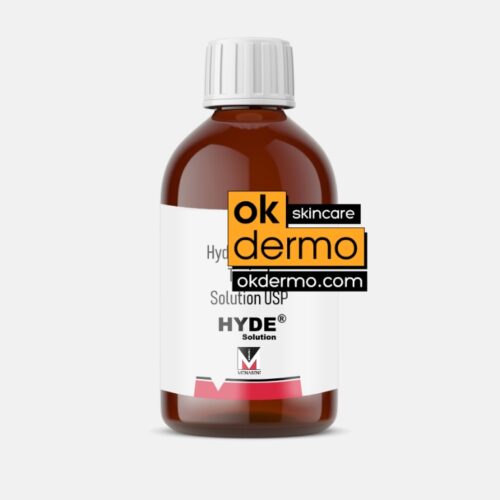
Hydroquinone 5% Topical Lotion
Hydroquinone 5% USP Solution
Brand name: Mediquin, Vitaquin, Interquin
From USD $25.00 Select options -
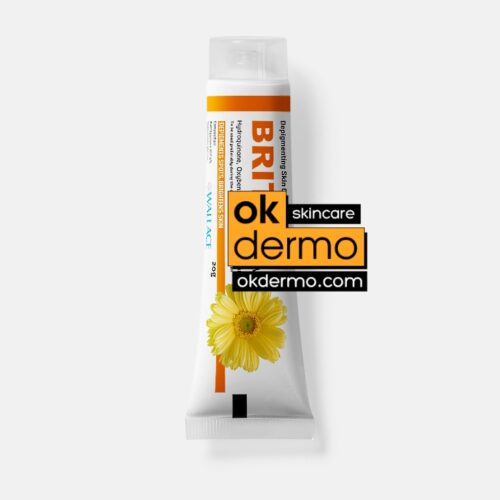
Brite® Skin Whitening Cream
Hydroquinone 4% + Oxybenzone 3% + Octinoxate 5%
Size: 20g / 0.7oz
Brand name: Lustra
USD $24.00 Add to cart -
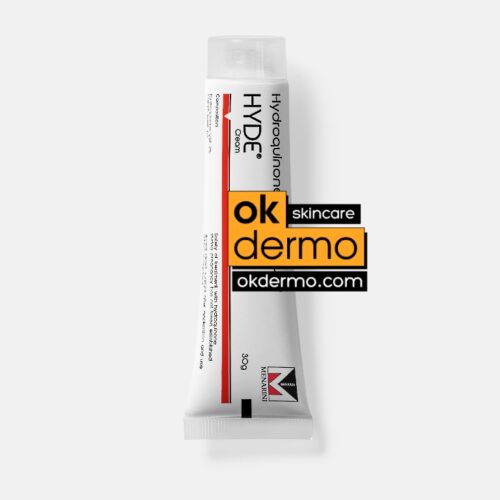
Hydroquinone 3% Topical Cream
3% Hydroquinone USP Skin Lightening Cream
Brand name: Melamix, Esoterica, Alera, Melquin, Melamin, LumaSilk, Obagi, Blanche
From USD $22.00 Select options -
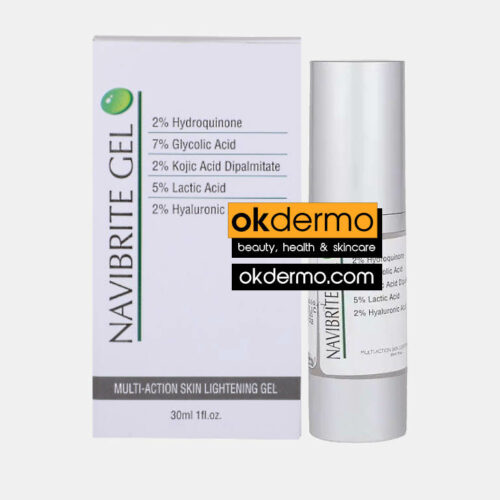
Navibrite® Multi-Action Skin Lightener
Hydroquinone 2% + Glycolic Acid 7% + Kojic Acid 2% + Lactic Acid 5% + Hyaluronic Acid 2%
Size: 30ml / 1 fl.oz
USD $46.00 Add to cart -
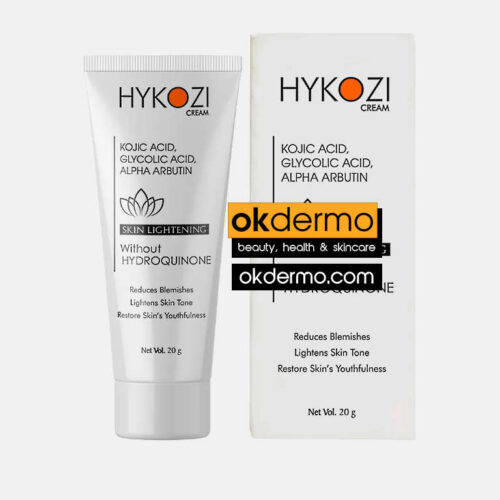
Hykozi® Non-Hydroquinone Skin Glow Cream
Kojic Acid 2% + Glycolic Acid 2% + Licorice 1% + Alpha Arbutin 1% + Lactic Acid 0.2%
Size: 20g / 0.7oz
USD $32.00 Add to cart
Key Ingredients in Skin Lightening Creams
Skin-lightening creams owe their efficacy to a range of ingredients, each with its own unique properties and mechanisms of action. Four standout ingredients in this category are hydroquinone, kojic acid, azelaic acid, and tranexamic acid.
Hydroquinone: The Gold Standard of Skin Lightening
Hydroquinone is often hailed as the gold standard of depigmentation or skin lightening, and clinically, it is widely used to treat melasma, PIH, solar lentigines, and ephelides. It works by inhibiting the activity of tyrosinase, an enzyme that regulates melanogenesis. It has been considered the most frequently used ingredient in skin lightening products for the last few decades and is still the go-to option in this category.
However, while it can deliver impressive results, it should be used with caution and under the guidance of a dermatologist to avoid any adverse effects.
Kojic Acid
Kojic acid is a natural metabolite derived from various fungi, most notably, the Japanese mushroom. It works just like hydroquinone as it inhibits tyrosinase to suppress melanogenesis. In addition, Kojic acid and its derivatives possess antioxidant, anti-inflammatory, and radio-protective properties making it a popular choice for those with sensitive skin.
Azelaic Acid
Azelaic acid is an organic compound with anti-inflammatory and antioxidant properties. While it’s primarily known for its ability to treat papulopustular rosacea and acne vulgaris, it also boasts skin-lightening properties. By reducing inflammation in the skin, it suppresses the inflammatory hyperpigmentation process leading to a more even complexion with minimal to no side effects.
Tranexamic Acid
Tranexamic acid is an anti-fibrinolytic substance meaning that it is something that is used to prevent bleeding problems such as postpartum bleeding, surgery, and heavy menstruation. However, recently it was discovered to have skin-lightening capability by inhibiting the plasmin enzyme, which can trigger melanogenesis.
Something special about tranexamic acid is that, unlike some other skin-lightening ingredients, it is less likely to cause irritation, making it suitable for a wider range of skin types.
Skin Lightening Creams for the Face
Now that we have a foundational understanding of skin lightening, it’s time to explore how to use skin-lightening creams effectively on specific body regions, starting with the delicate skin of your face.
Choosing the Right Cream for Your Face
Remember that every skin is so unique that it requires tailor-made skincare for each individual. Facial skin, in particular, is quite sensitive, hence you should not forget to consider the following factors when making your choice:
- Skin Type: Is your skin normal, oily, dry, or a combination? Knowing your skin type is essential to pick a good product with minimal side effects.
- Skin Tone: The skin tone, also known as natural skin color, is a determinant of the degree of pigmentation and its distribution pattern in your skin. Identifying your skin tone is also important since most of the skincare products are specifically formulated to match a particular tone/tones.
- Ingredients: As we’ve discussed, understanding the active ingredients in the cream is essential, especially when it comes to the facial skin as there is always room for adverse effects with these actives.
Safety Considerations for Facial Use
While skin-lightening creams can work wonders for your face, the delicate nature of the facial skin can sometimes enhance their potential side effects. Therefore, here are some safety considerations to keep in mind:
- Perform a Patch Test: Never forget to do a patch test before slathering your skin-lightening cream all over your face. This allows you to identify potential allergy reactions or any other adverse effects associated with the active ingredients.
- Avoid the Eye Area: Most skin-lightening products are not meant for the skin near the eyes, and mucous membranes, therefore read the product label carefully and follow the directions as prescribed.
- Stay Hydrated: Keeping your facial skin well hydrated is essential for the lightening cream to work optimally and create less irritation. Therefore, use a good moisturizer along with your lightening cream.
Tri-Luma® Cream for Hyperpigmentation is a perfect and much safer product to be used on your face thanks to optimal levels of Hydroquinone, Tretinoin, and Fluocinolone Acetonide. It is recommended for all sorts of hyperpigmentation concerns ranging from melasma to PIH.
So, armed with this knowledge, you’re well on your way to achieving a radiant complexion on your face. But what about the rest of your body? No worries! We are now going to explore skin lightening for the body.
-
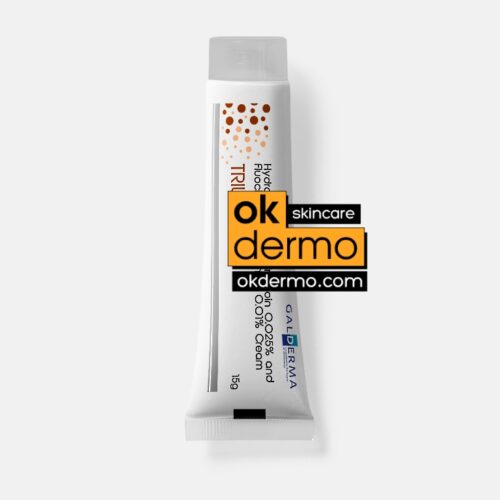
Tri-Luma® Cream for Hyperpigmentation
Hydroquinone 2% / 4% + Tretinoin 0.012% / 0.05% + Fluocinolone 0.01%
Size: 15g / 0.53oz, 20g / 0.7oz
Brand name: Lumiquin, Lumacip Plus, Refaquin, Retrieve
From USD $35.00 Select options -
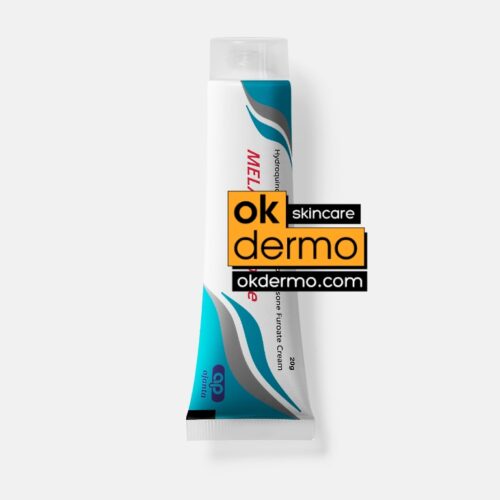
Melacare Forte® Triple Action Cream
Hydroquinone 4% + Tretinoin 0.025% + Mometasone 0.1%
Size: 25g / 0.9oz
USD $24.00 Add to cart -
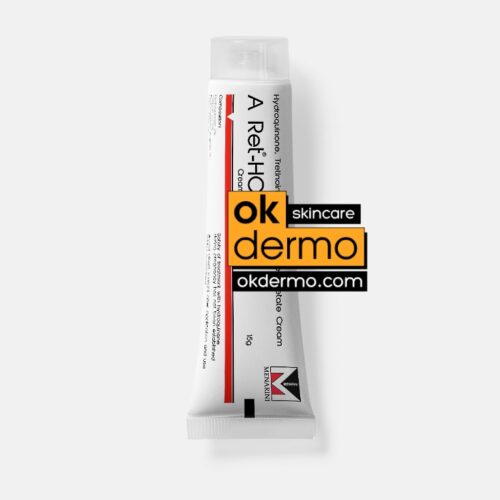
A Ret-HC® / Melanorm-HC® Skin Cream
Hydroquinone 2% + Tretinoin 0.025% / 0.05% + Hydrocortisone Acetate 1%
Size: 15g / 0.53oz
Brand name: Pigmanorm, Katarya, Kataryaxn, Ketarya, Kevarya
From USD $24.00 Select options -

Melrio® Skin Whitening Cream
Hydroquinone 2% + Tretinoin 0.025% + Fluticasone Propionate 0.05%
Size: 20g / 0.7oz
Brand name: Tri-Luma
USD $24.00 Add to cart
Skin Lightening Creams for the Body
Your face isn’t the only area that deserves the glow-up treatment. Achieving an even skin tone on your body is equally important. Certain areas of your body, such as the elbows, and knees, are more prone to darkening issues due to hyperpigmentation, making an uneven skin tone throughout the body. Here’s how to address them:
- Hands: The hands are often exposed to UV radiation. Therefore, apply a skin-lightening cream specifically designed for the hands to combat age spots and sun damage.
- Elbows and Knees: These joints tend to be darker due to constant friction and can be significantly prominent in fair-skinned people. Use a targeted cream to even out the skin tone in these areas.
Unveil® Neck, Knee, Elbow Brightening Cream is a perfect product for restoring skin tone and texture in friction-affected areas by promoting the natural shedding away of dead cells and the growth of new cells.
Now that we’ve covered skin lightening for both the face and body, let’s shine a spotlight on a topic that’s garnered significant attention and controversy – permanent skin lightening.
Permanent Skin Lightening
Permanent skin lightening, as the name suggests, goes beyond the temporary results achieved with regular skin-lightening creams. This controversial practice involves using more intensive treatments, such as laser therapy or chemical peels, to permanently lighten the skin.
Alternatives to Permanent Lightening
Before considering permanent lightening, explore alternative options:
- Advanced Skin Lightening Creams: Some advanced formulations offer longer-lasting results without the risks associated with permanent treatments.
- Dermatological Procedures: Consult a dermatologist for safe and effective treatments like chemical peels or microdermabrasion which is a minimally invasive skincare technique for skin lightening.
Conclusion
Hyperpigmentation disorders, such as melasma, freckles, and dark spots, are complex conditions influenced by a combination of genetic, hormonal, and environmental factors. Understanding the medical science behind these conditions is essential for developing effective treatments and prevention strategies. Proper sun protection, effective skincare, and, in some cases, medical interventions can help manage and reduce the appearance of hyperpigmentation, enhancing the overall health and appearance of the skin.
Post by:
Marcella Jiovanni
Skin Care Professional
“Marcella Jiovanni actively promotes the importance of maintaining healthy skin, she envisions the future of dermatology as moving away from pure medical, pharmacological dermatology and flowing more toward a holistic approach to wellness and skincare.”

















